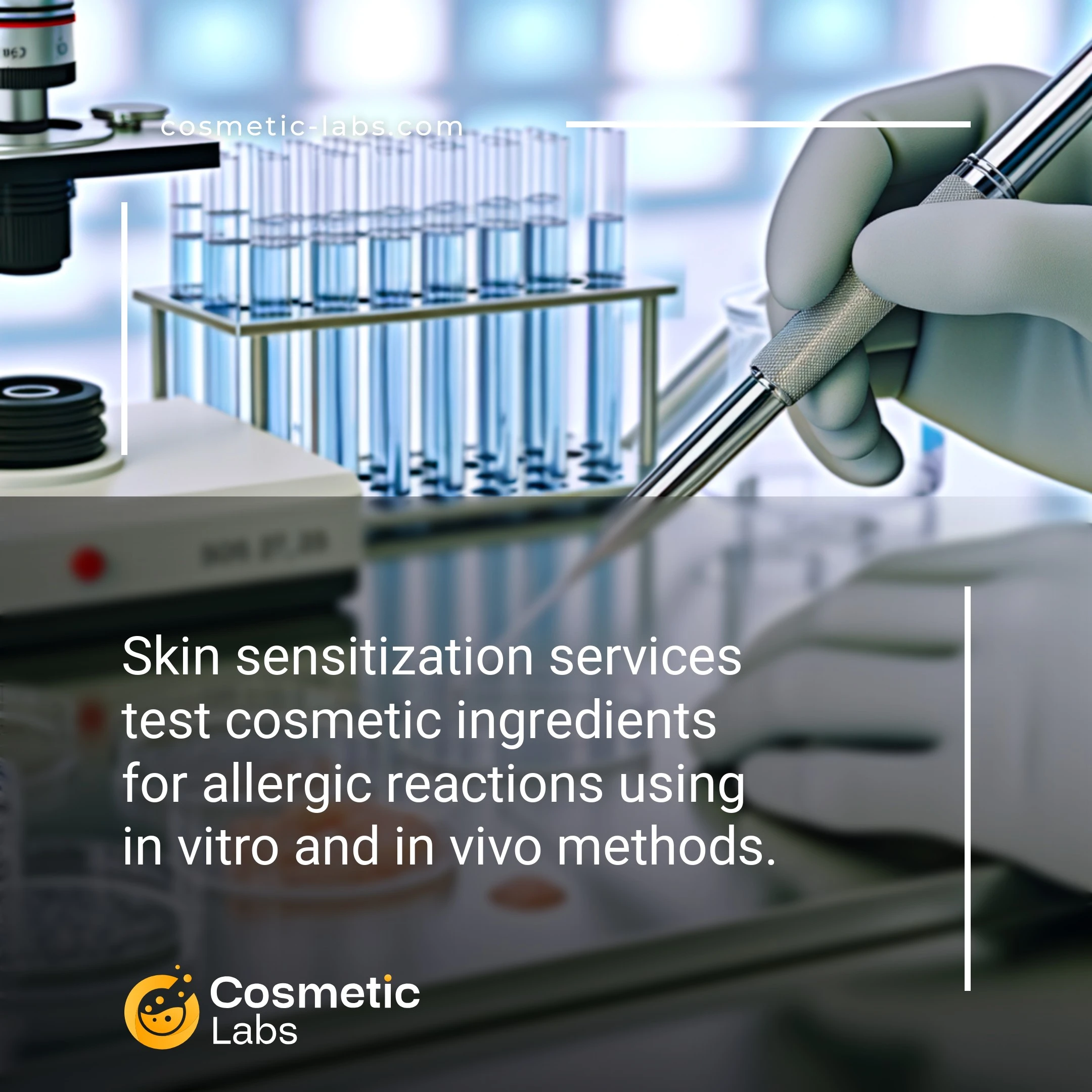Skin Sensitization Services for Safe Cosmetic Product Development

What is Skin sensitization?
Skin sensitization testing evaluates whether cosmetic ingredients or finished products can trigger allergic reactions through repeated skin contact. Labs conduct these tests using validated methods like the Local Lymph Node Assay (LLNA) or in vitro alternatives to identify potential allergens before your products reach consumers. This predictive safety assessment helps you meet regulatory requirements in major markets while protecting your brand from costly recalls and liability issues.
Why do you need this service?
Cosmetic labs apply skin sensitization testing to screen new preservative systems and fragrance blends before full formulation development, saving brands months of reformulation work. These tests help identify potentially reactive ingredients in natural extracts and botanical actives, allowing formulators to adjust concentrations or find alternatives that meet both safety standards and marketing claims.
Who provides Skin sensitization services?
All cosmetic labs providing Skin sensitization services
There is no company providing these services at the moment.
Skin Sensitization Testing Services
Skin sensitization testing determines if your cosmetic ingredients or formulations trigger allergic reactions. These tests help you meet regulatory requirements while protecting consumers from potential allergens before your products reach the market.
Testing Methods and Protocols
Labs on our platform offer both in vitro skin sensitization tests and traditional patch testing approaches. The DPRA (Direct Peptide Reactivity Assay) and KeratinoSens™ assays identify potential allergens without animal testing.
Common testing protocols include:
- LLNA alternatives using human cell lines
- HRIPT (Human Repeat Insult Patch Test) for finished products
- Predictive allergen screening for raw materials
- Photo-sensitization testing for sun-exposed products
Most labs complete initial screening within 2-3 weeks, with full HRIPT studies taking 6-8 weeks.
Regulatory Compliance and Documentation
Partner labs provide GLP-compliant testing that meets EU, FDA, and international standards. You’ll receive detailed reports documenting test methods, results, and safety classifications for your regulatory dossiers.
Testing packages typically include:
- OECD guideline-compliant protocols
- Safety assessment reports for CPSR documentation
- Allergen concentration thresholds and NOAEL data
- Classification according to UN GHS categories
Labs also offer reformulation support when ingredients show sensitization potential, helping you develop safer alternatives while maintaining product performance.
Practical Applications of Skin Sensitization Testing in Cosmetic Development
Skin sensitization testing identifies ingredients and formulations that trigger allergic reactions, protecting both consumers and brands from product recalls and liability issues.
Pre-Market Safety Validation for New Formulations
Cosmetic labs apply skin sensitization testing services during early product development to screen raw materials and finished formulas. Testing protocols include Local Lymph Node Assay (LLNA) alternatives and in vitro methods like h-CLAT and DPRA, which predict sensitization potential within 7-14 days.
Labs test preservatives, fragrances, and active ingredients at various concentrations to establish safe usage levels. This data helps formulators adjust ingredient percentages or select alternative components before moving to clinical trials.
Regulatory Compliance for International Markets
Different regions require specific sensitization data for cosmetic registration. EU markets demand non-animal testing methods under Regulation 1223/2009, while other territories accept traditional patch testing results.
Testing laboratories provide documentation packages tailored to each market’s requirements. Results include hazard classification data and safety margins that support product dossiers for multiple jurisdictions simultaneously.
| Testing Method | Turnaround Time | Regulatory Acceptance | Sample Requirements |
|---|---|---|---|
| h-CLAT (in vitro) | 7-10 days | EU, Japan, Korea | 50mg active ingredient |
| DPRA (in vitro) | 5-7 days | OECD countries | 10mg test material |
| KeratinoSens™ | 10-14 days | EU, US, Canada | 25mg formulation |
| HRIPT (human patch) | 6-9 weeks | US, Brazil, ASEAN | 5g finished product |
Ready to validate your formulation’s safety profile? Connect with specialized testing laboratories on our platform to discuss your skin sensitization testing needs and regulatory requirements.
